Abstract
In the WHO Leprosy BCG Trial in Burma a mass survey was undertaken to determine whether children had been exposed to patients with leprosy and, if so, the form of the index case. This paper presents the most important epidemiological data collected in this survey. The prevalence rate was 31.6 per 1 000. It seems that even if the prevalence rate is very high the L rate does not increase accordingly. The high T rates in areas of high endemicity seem to be related mainly to the degree of spreading of leprosy, even to persons who react to lepromin. Comparison of the results with data available for the area before the survey was made shows that 87% of the L cases had already been detected and that 54% of the T cases had not. There was a tendency for high L rates to be associated with high prevalence rates. The results do not suggest that any particular age group has greater susceptibility or resistance; the prevalence rates seemed to be related mainly to the age when exposure occurred. A higher prevalence of leprosy in males started to appear in the 10-14-year age group, and after the age of 15 the difference became impressive. Biological, socio-economic, and environmental factors seem to be responsible for the level of endemicity, which does not seem to be essentially or primarily related to ethnic origin.
Full text
PDF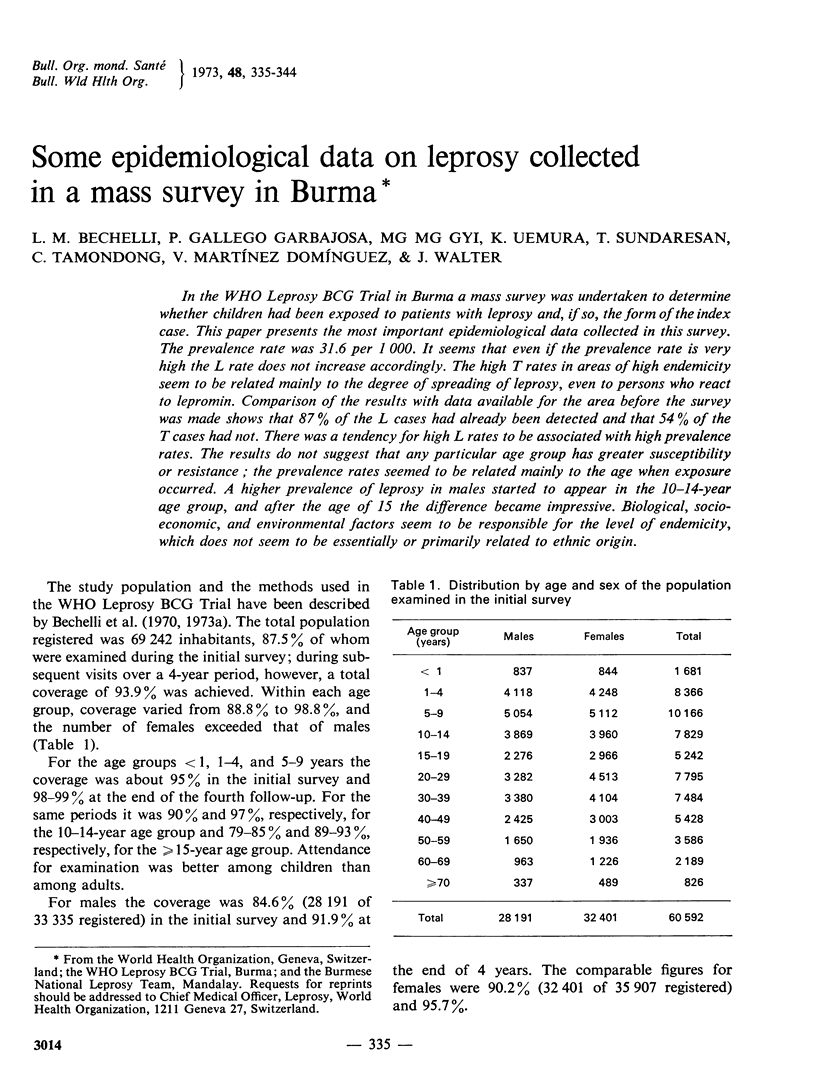
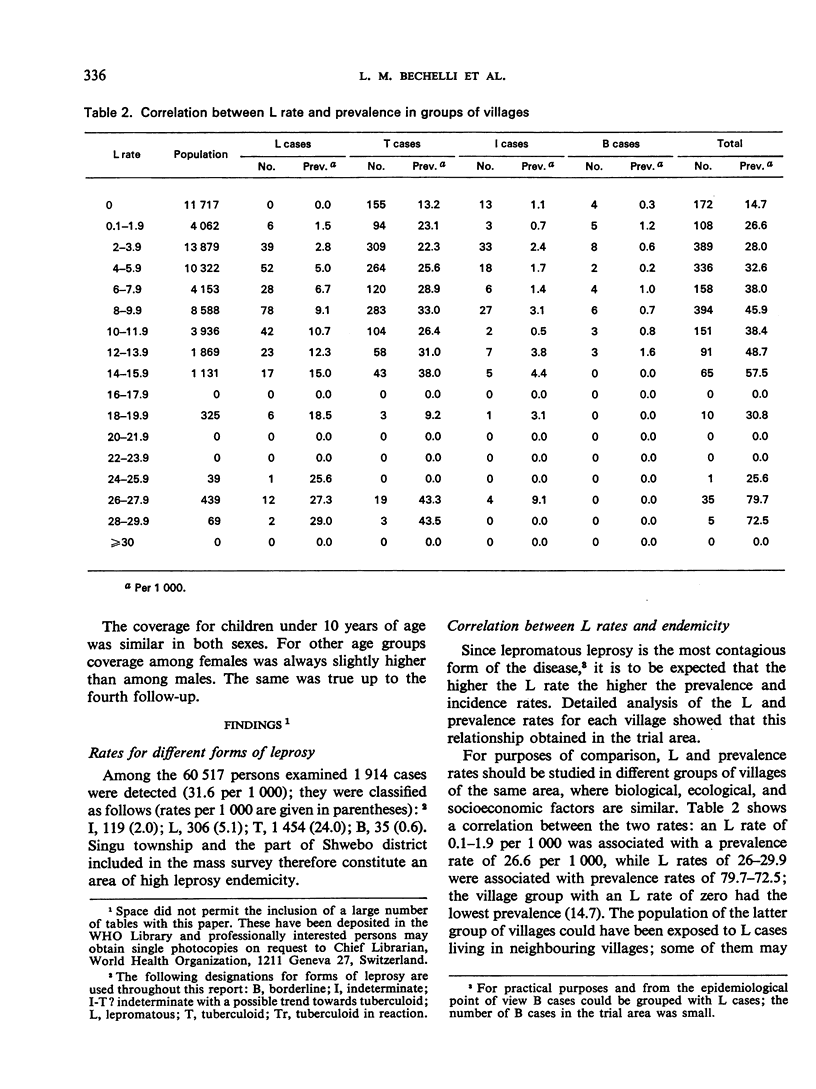
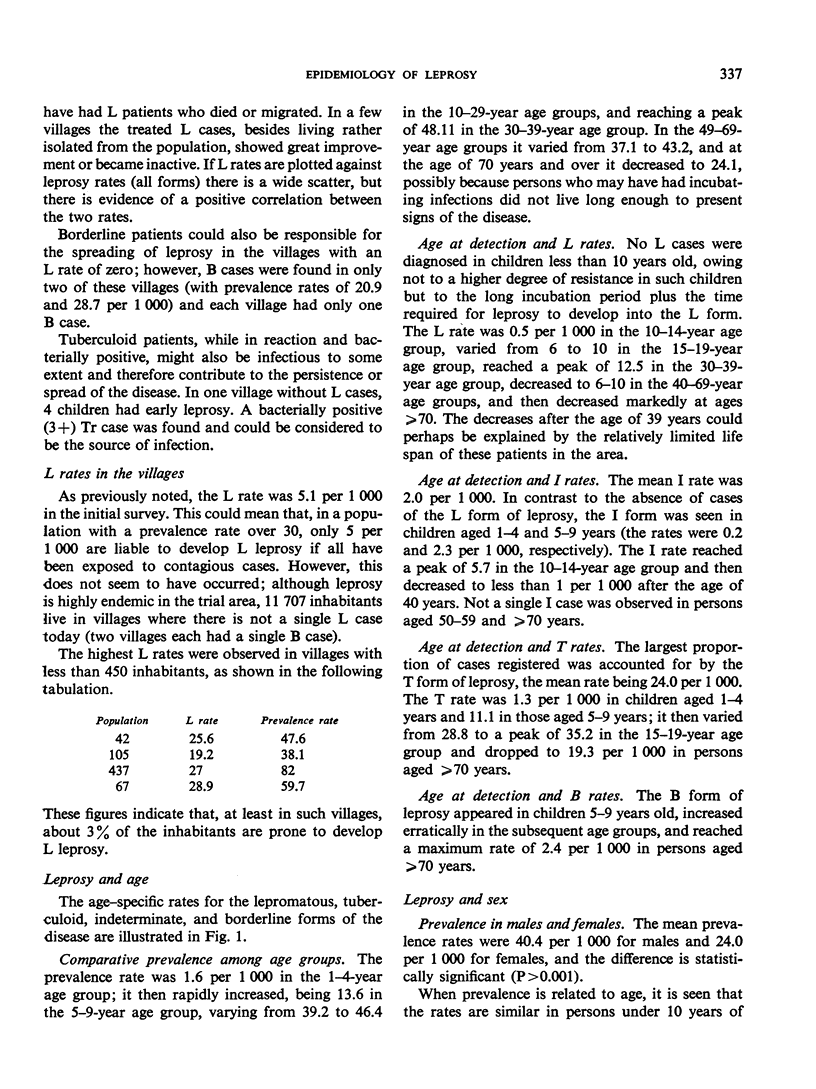

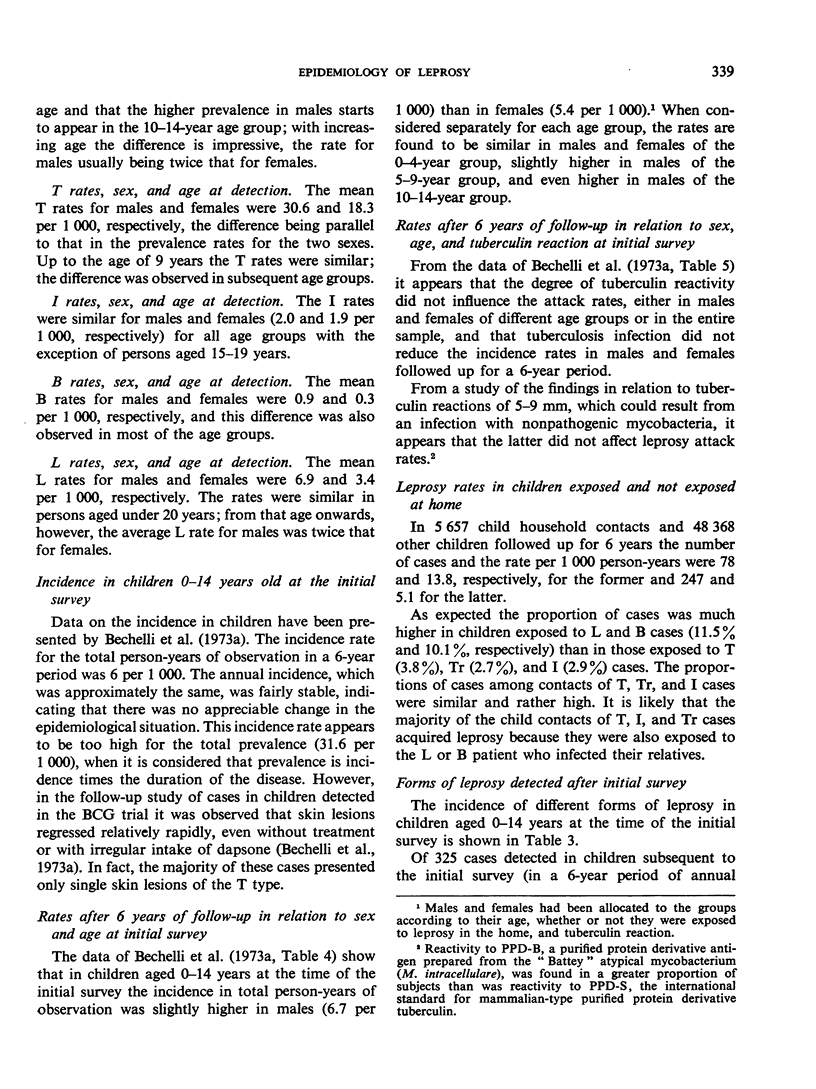
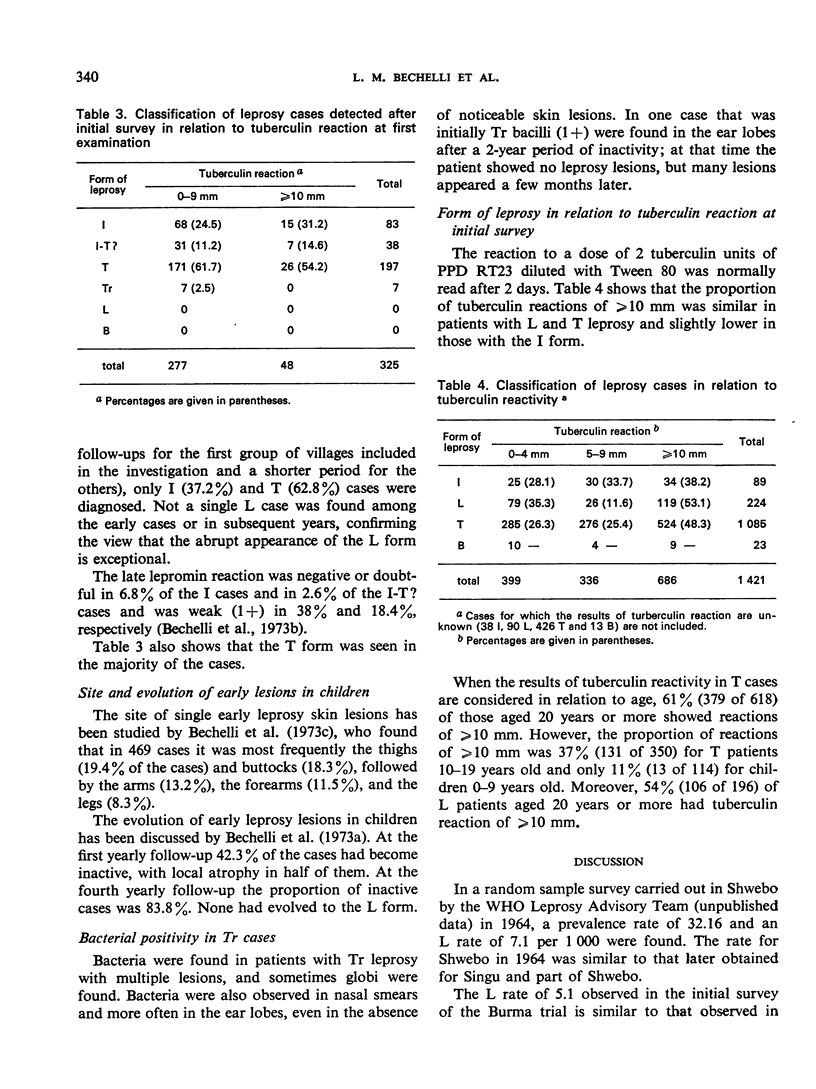
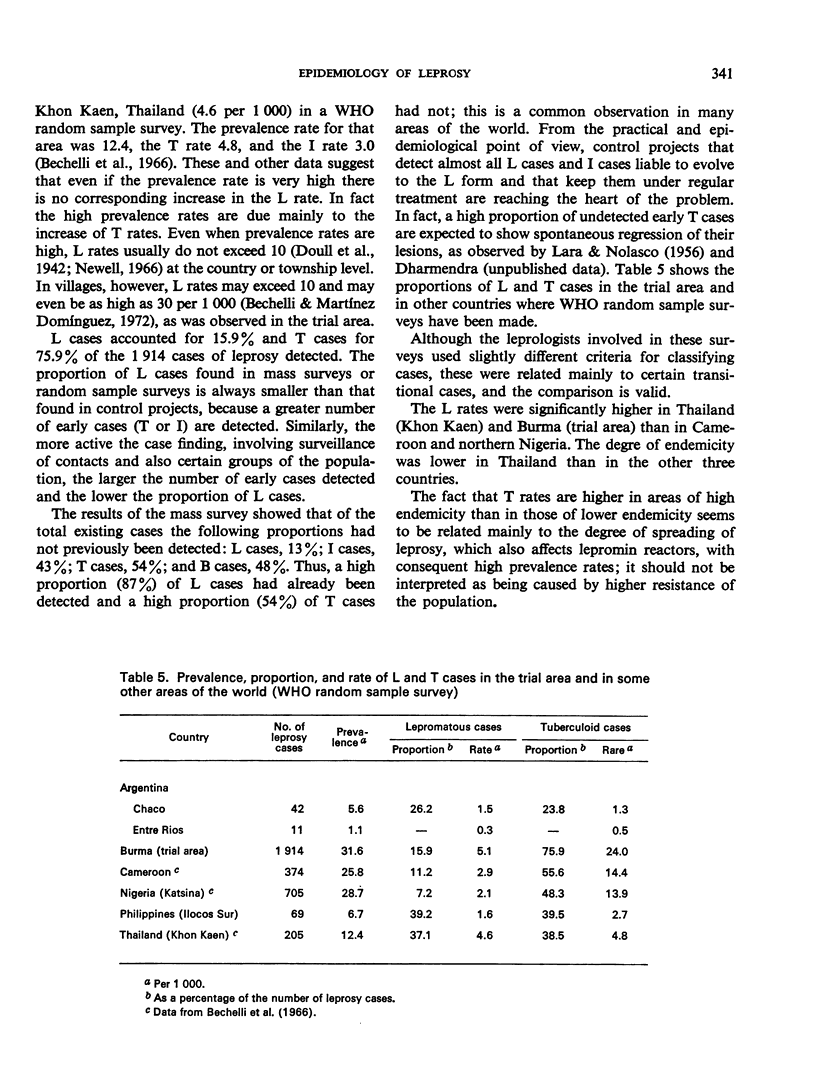
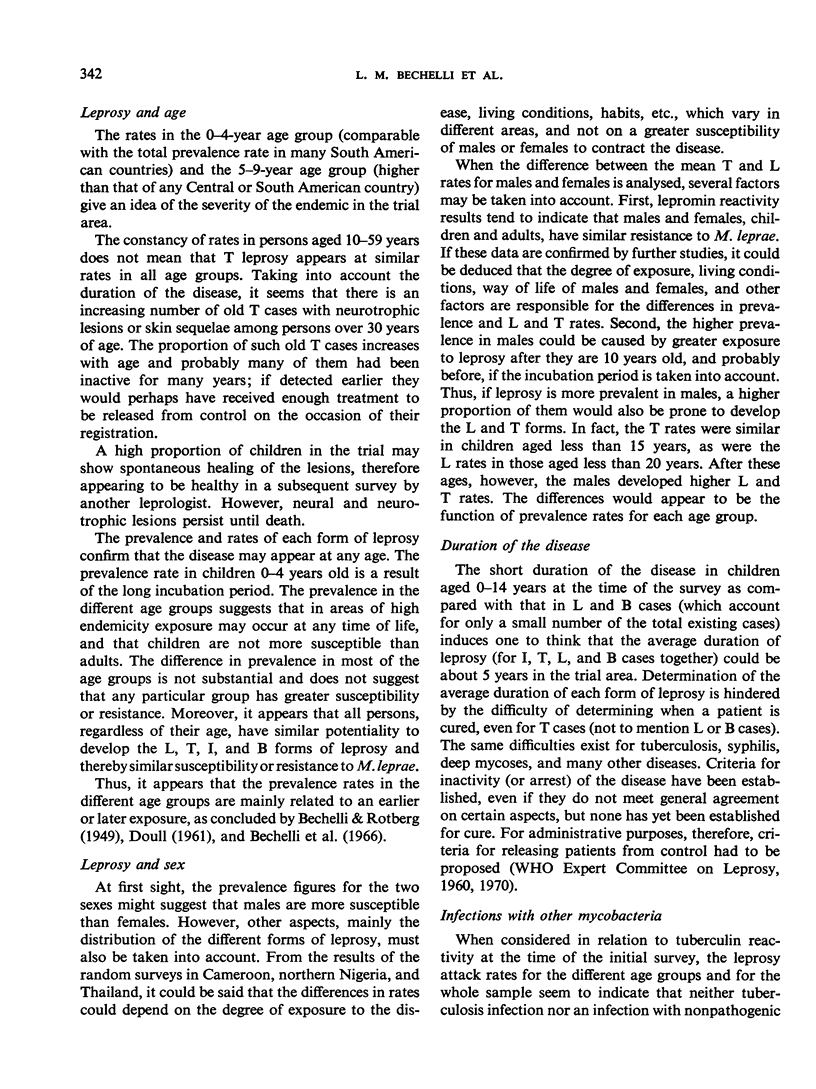
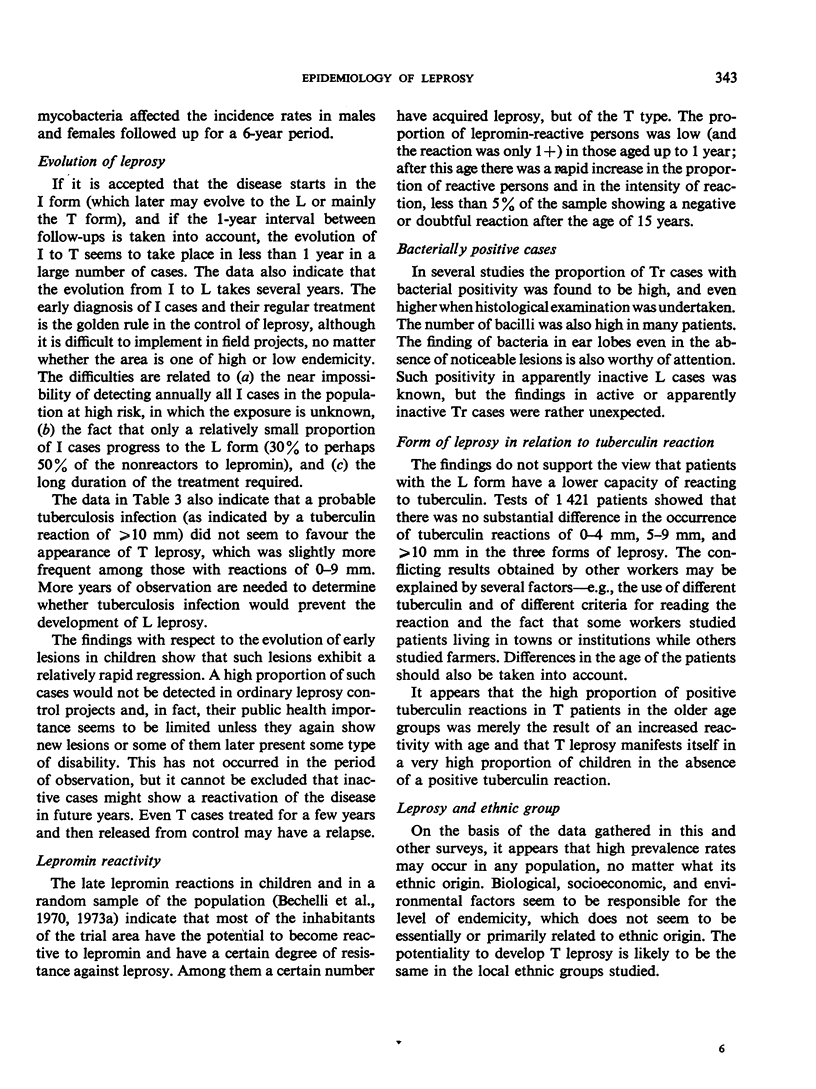
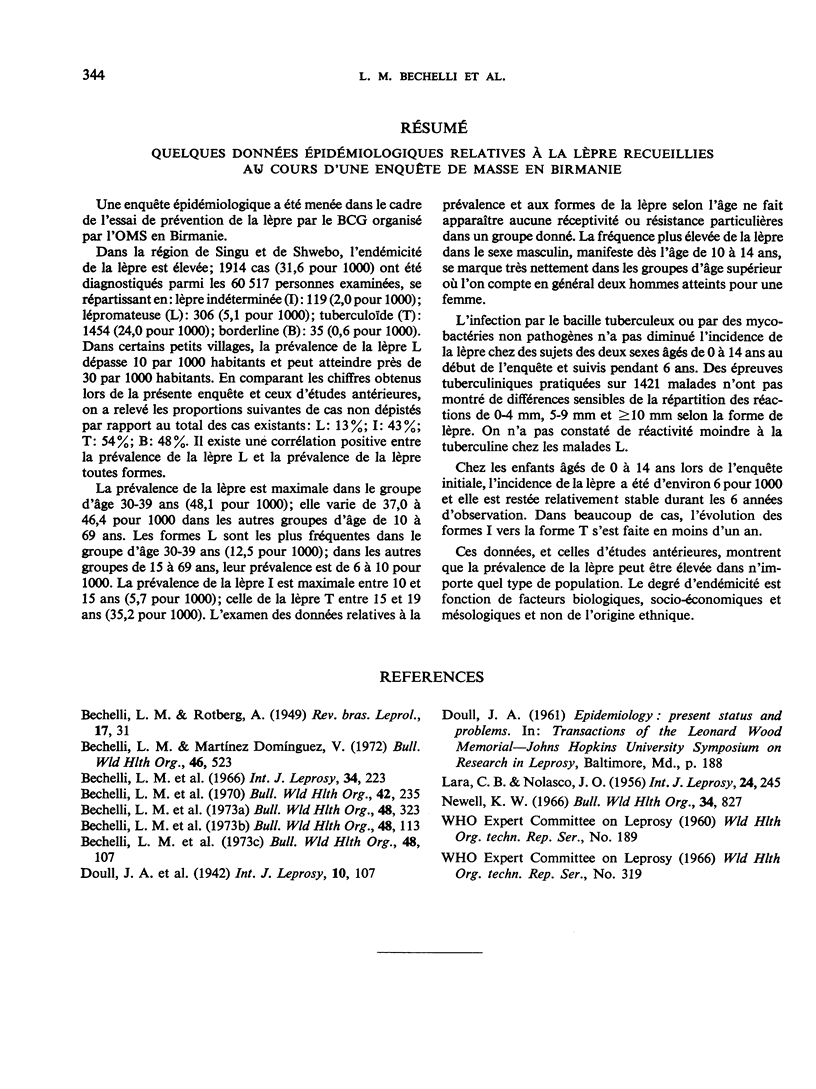
Selected References
These references are in PubMed. This may not be the complete list of references from this article.
- Bechelli L. M., Martinez Dominguez V., Patwary K. M. WHO epidemiologic random sample surveys of leprosy in northern Nigeria (Katsina), Cameroon and Thailand (Khon Kaen). Int J Lepr Other Mycobact Dis. 1966 Jul-Sep;34(3):223–243. [PubMed] [Google Scholar]
- Bechelli L. M., Martìnez Domìnquez V. Further information on the leprosy pproblem in the world. Bull World Health Organ. 1972;46(4):523–536. [PMC free article] [PubMed] [Google Scholar]
- LARA C. B., NOLASCO J. O. Self-healing, or abortive, and residual forms of childhood leprosy and their probable significance. Int J Lepr. 1956 Jul-Sep;24(3):245–263. [PubMed] [Google Scholar]


